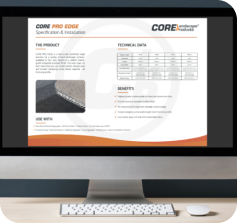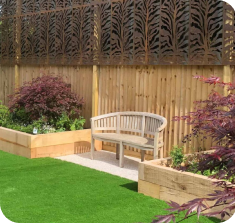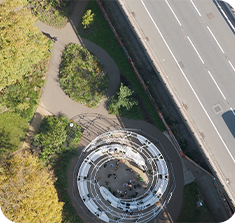- Products
-
CORE EDGE Flexible Steel Edging & Tree Rings
-
CORE DRIVE Gravel Driveway Stabiliser
-
CORE Tree Root Protection ‘No Dig’ Construction
-
CORE VUBA Resin Distribution Centre
-
CORE DATUM EDGE NEW: Heavy Duty Landscape Edging
-
CORE COMMERCIAL Heavy Duty Gravel Stabiliser
-
CORE DRAINAGE Drainage Cells & Board
-
CORE PRO EDGE Aluminium Landscape Edging
-
CORE PATH Gravel Pathway Stabiliser
-
CORE WATER CRATE Soakaway & Attenuation Crates
-
CORE GRASS Grass Reinforcement & Protection
-
CORE GEOSYNTHETICS Geogrids & Geosynthetics
-
Light Towers For Internal & External Use
-
CORE EQUESTRIAN Specialist Equine Surfacing
-
CORE GLOW Glow In The Dark Aggregates
-
- Case Studies
- About
- Knowledge Centre
DownloadsProduct Brochures
Cpd’s & TrainingContinuing Professional Development
Latest NewsExpertise and resources to provide specifiers
Meet the TeamThe faces behind the team at CORE
TestimonialsRead all our testimonials from Trustpilot
SectorsDiscover CORE products perfect for your sector.
- Buy Near Me
- Contact
How to Build a Soakaway Using CORE WATER Crates
Why do I need drainage and is a soakaway the best solution for my project?
If you have existing ground drainage problems after rainfall (easily identified by waterlogged areas) then some form of drainage is essential! It’s important to remember that soakaways rarely work in heavy clay soils because the water collected in the soakaway can’t filter out into the surrounding ground. You can assess your ground by carrying out a percolation test or by asking your local Building Control, they will know your soil type and be able to advise if the ground in your area isn’t suitable for a soakaway. Don’t worry if this is the case, you still have other options. Collecting and storing water then pumping it to another area of your home or garden where you need it is a great idea. Alternatively, you can discharge into a combined or surface water sewer, but remember it is illegal to discharge into a foul sewer. So be sure to correctly identify the sewer type before making a connection.
So, how do I test my ground conditions to see if a soakaway is suitable for my project?
You will need to carry out a percolation test:
First dig a small square hole 300mm x 300mm at the depth of invert (this is where your drainage pipe will feed into the soakaway crate)
Fill the hole with water and leave it to soak overnight, come back and check it next morning.
Now refill the hole, watch and time how long the water takes to seep away from the 75% point to the 25% point (this is 150mm), then calculate as follows.
Example
60 mins to drain. Calculate average time in seconds.
60 minutes divided by 150 millimetres = 6,000 s/m
To clarify, 150 (mm) x 6 = 900, then divide by 60 (mins)
= 15 s/m
This should be done in a few areas across your proposed driveway or adjacent lawn area then take an average from the readings.
Where should I position my soakaway?
A soakaway must be at least 5 metres from the house and 2.5 metres from your neighbours’ fence. The pipe flowing to the soakaway should be 100mm underground waste ideally, but the Building Inspector may settle for 75mm, and it should be laid to a fall of 1:40. Soakaways need to have a firm base especially if they are under vehicular traffic, if possible its always easier to construct a soakaway under a lawn or pedestrian area to reduce the amount of work required.
What size does my soakaway need to be?
This can vary slightly depending on the soil conditions around the soakaway. A very general rule of thumb is; 1 cubic metre (1 m3) for a 50m2 driveway and 2 cubic metres (2m3.) for a 100m2 driveway (or 75m driveway with a steep gradient) and always remember to allow for your roof area if you are discharging both into the same soakaway. Either way for your soakaway to work properly it must be able to discharge the incoming water quicker than it fills up.
If you find you have a waterlogged garden or driveway, then a CORE WATER Soakaway crate may be the perfect solution for you.
Copyright CORE 2025 Website design and marketing by Unity Online





